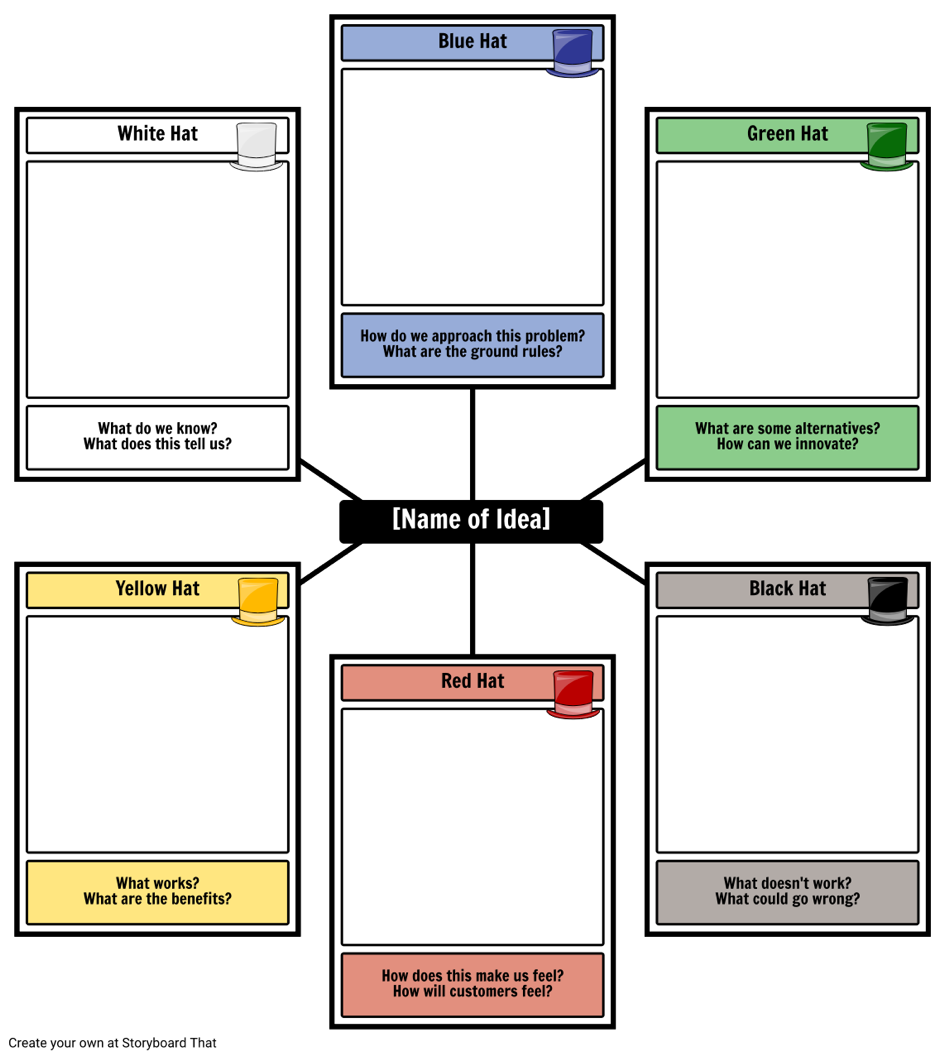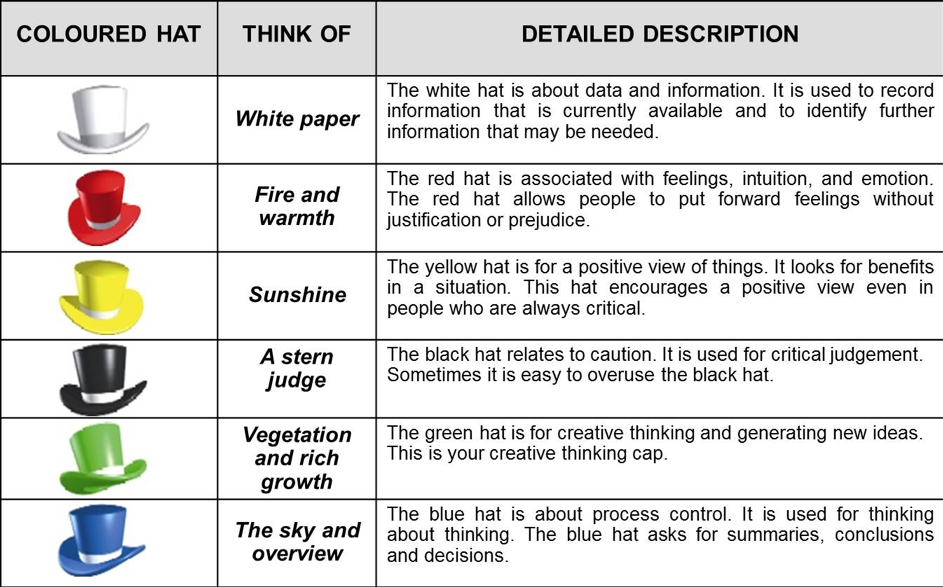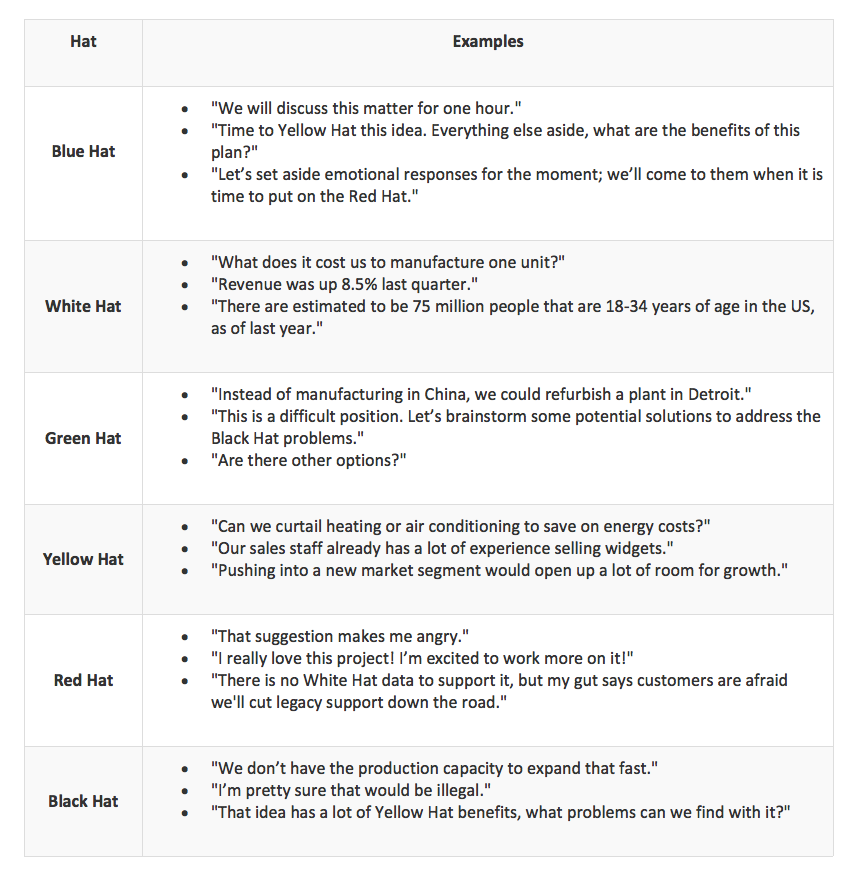Communication
9. Improving communication with your own child
9.2. Six Thinking Hats activity
| ACTIVITY |
|
|
|
|
Should I do the activity alone? |
It can be done individually, but best be done in groups or in your family
|
|
|
After completing the activity… |
I should be able to:
|
|
|
Before I start, what will I need to do this activity? |
Nothing special. |
|
What do I have to do?
1. Read the following background information about the Six Thinking Hats Six Thinking Hats – TM’d methodology by Dr. Edward de Bono Dr. de Bono’s Six Thinking Hats® is a tool that can empower teachers/trainers to motivate students to use critical thinking and problem-solving skills, while expressing inner creativity. Assigning each thinking style a colour serves as a visual cue to help participants recognise the thinking skill they are using.
The participants wearing the hats of a certain colour will be invited to do the following:
2. Think of a communication issue – it can be a communication difficulty between you and your child, you and a professional, or your child as a professional. Write a short description of the issue for yourself. 3. Brainstorm solutions using the Six Thinking Hats as follows:
4. Use the following storyboard to describe a solution: 
|
||
|
|
What to do next? |
|

